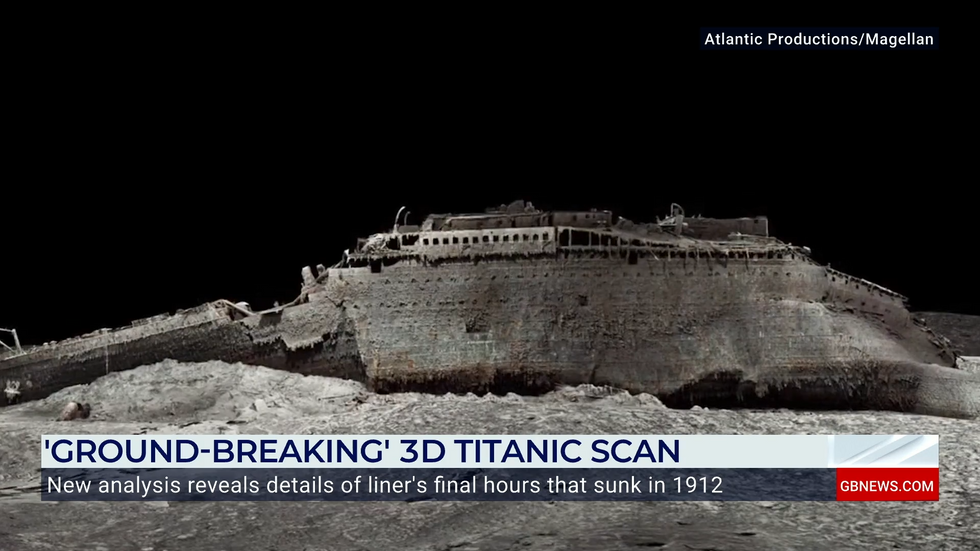The project to make the new scan began in 2022
Don't Miss
Most Read
Trending on GB News
A groundbreaking documentary is set to reveal unprecedented details about the Titanic's final moments using cutting-edge underwater scanning technology.
National Geographic's "Titanic: The Digital Resurrection" will showcase a full-scale digital twin of the doomed ship, accurate down to every rivet.
The project, which began in 2022, involved collecting 715,000 digitally captured images that were examined over nearly two years.
The documentary premieres ahead of the 113th anniversary of the shipwreck on April 12.

David Marquett spoke about the new findings
GB NEWS / ATLANTIC PRODUCTIONS / MAGELLAN
Speaking on GB News, Martin Daubney highlighted how the Titanic suffered a "glancing blow" against the iceberg, according to the new research.
"Researchers are being led to believe that if they had seen the glacier slightly sooner, it would not have been a glancing blow that would have taken it down", Daubney said.
He noted that small changes could have prevented the disaster entirely.
"If it had been going just a bit slower or they had immediately responded or the ship had been designed with a bigger rudder, any of these tiny things, it could have avoided its fate.

The new scan has been branded 'ground-breaking'
ATLANTIC PRODUCTIONS / MAGELLAN
Ex-submarine commander David Marquett also shared his insights on the programme, focusing on the nature of the damage to the ship's hull.
"One of the things I found really interesting was they said that punctures were a series of A4-sized holes, not a big slice which would have really doomed the ship," Marquett remarked.
These relatively small punctures were spread across six compartments along a narrow section of the hull.
The flood water entered slowly but steadily through these holes, eventually overwhelming the ship.

David Marquett joined Martin Daubney on GB News
GB NEWS
The digital scans revealed a valve in an open position, indicating steam was still flowing into the Titanic's electricity generating system.
This evidence supports eyewitness accounts that a brave team of engineers, led by Cumbria-born Joseph Bell, worked until the end to keep the ship's lights on.
All these engineers perished in the disaster, but their heroic actions saved many lives by allowing crew time to launch lifeboats safely.
"They held the chaos at bay as long as possible," Titanic analyst Parks Stephenson told the BBC.
The documentary challenges the depiction of the Titanic's sinking in James Cameron's 1997 film.
"The Titanic didn't split cleanly in two—it was violently torn apart, ripping through first-class cabins where prominent passengers like J.J. Astor and Benjamin Guggenheim may have sought refuge," National Geographic stated.
The investigation also exonerates First Officer William Murdoch, who has long been accused of abandoning his post.
Evidence suggests Murdoch and his crew were swept away by the sea before reaching a lifeboat.
The deep-water scans revealed the wreck is deteriorating rapidly at some 12.









